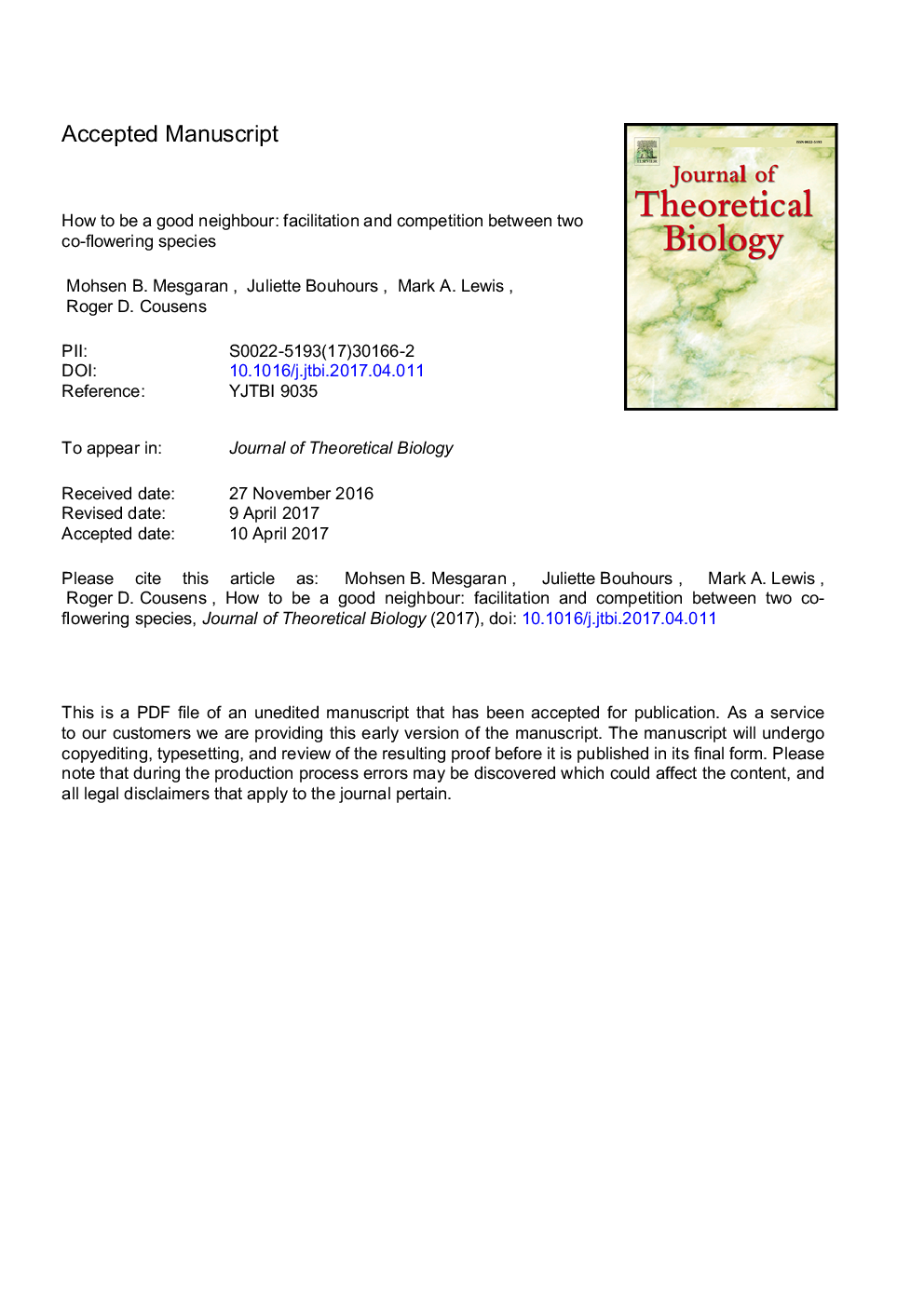| کد مقاله | کد نشریه | سال انتشار | مقاله انگلیسی | نسخه تمام متن |
|---|---|---|---|---|
| 5760090 | 1623788 | 2017 | 31 صفحه PDF | دانلود رایگان |
عنوان انگلیسی مقاله ISI
How to be a good neighbour: Facilitation and competition between two co-flowering species
ترجمه فارسی عنوان
چگونگی همسایگی خوب: تسهیل و رقابت بین دو گونه گل سوسن
دانلود مقاله + سفارش ترجمه
دانلود مقاله ISI انگلیسی
رایگان برای ایرانیان
کلمات کلیدی
سیستم اصلاح نژاد خودمختاری بیرون رفتن پاسخ عملکردی، جامعه گیاهی، گرده افشانی، تعاملات مثبت، مدل ریاضی، تغذیه مطلوب،
موضوعات مرتبط
علوم زیستی و بیوفناوری
علوم کشاورزی و بیولوژیک
علوم کشاورزی و بیولوژیک (عمومی)
چکیده انگلیسی
Empirical evidence suggests that co-flowering species can facilitate each other through shared pollinators. However, the extent to which one co-flowering species can relieve pollination limitation of another while simultaneously competing for abiotic resource has rarely been examined. Using a deterministic model we explored the demographic outcome for one (“focal”) species of its co-occurrence with a species that shares pollinators and competes for both pollinator visitation and abiotic resources. In this paper we showed how the overall impact can be positive or negative, depending on the balance between enhanced fertilization versus increased competition. Our model could predict the density of co-flowering species that will maximize the pollination rate of the focal species by attracting pollinators. Because that density will also give rise to competitive effects, a lower density of co-flowering species is required for optimizing the trade-off between enhanced fertilization and competition so as to give the maximum possible facilitation of reproduction in the focal species. Results were qualitatively different when we considered attractiveness of the co-flowering species, as opposed to its density, because attractiveness, unlike density, had no effect on competition for abiotic resources. Whereas unattractive neighbours would not bring in pollinators, very attractive neighbours would captivate pollinators, not sharing them with the focal species. Thus optimal benefit to the focal species came at intermediate levels of attractiveness in the co-flowering species. This intermediate level of attractiveness in co-flowering species simultaneously maximized pollination and overall facilitation of reproduction for the focal species. The likelihood of facilitation was predicted to decline with the selfing rate of the focal species, revealing an indirect cost for an inbreeding mating system. Whether a co-flowering species can be facilitative depends on the way pollinators respond to the plant density: only a Type III functional response for visitation rate can result in facilitation. Our model provided both a conceptual framework and precise quantitative measures for determining the impacts of a neighbouring co-flowering species on reproduction.
ناشر
Database: Elsevier - ScienceDirect (ساینس دایرکت)
Journal: Journal of Theoretical Biology - Volume 422, 7 June 2017, Pages 72-83
Journal: Journal of Theoretical Biology - Volume 422, 7 June 2017, Pages 72-83
نویسندگان
Mohsen B. Mesgaran, Juliette Bouhours, Mark A. Lewis, Roger D. Cousens,
